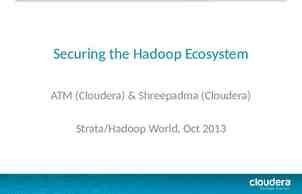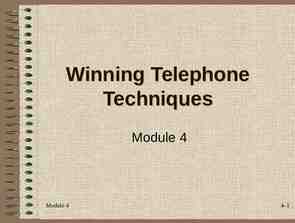Highline Class, BI 348 Basic Business Analytics using Excel, Chapter
11 Slides64.09 KB
Highline Class, BI 348 Basic Business Analytics using Excel, Chapter 01 Intro to Business Analytics 1
Topics Raw Data Into Useful Information Business Analytics (Textbook): Descriptive Analytics Predictive Analytics Prescriptive Statistics Big Data Steps In Making A Decision Types Of Decisions Approaches To Decision Making 2
Raw Data Into Useful Information Data Analysis (From Busn 216 and Busn 218): Converting raw data into useful information for decision makers Statistical Analysis (Busn 210): Statistics is the art and science of collecting, analyzing, presenting and interpreting data to help make informed decisions. Analysis (Merriam-Webster dictionary): A careful study of something to learn about its parts, what they do and how they relate to each other An explanation of the nature and meaning of something Analytics (Merriam -Webster dictionary): Information resulting from systematic analysis of data or statistics Business Analytics (textbook): Scientific process of transforming data into insight for better decisions 3
Business Analytics (Textbook): Scientific process of transforming data into insight for better decisions Data driven decision making Fact-based decision making Scientific process such as: Queries, Linear Regression, and Optimization Business Analytics has three parts: Descriptive Analytics Describing the past Predictive Analytics Build models that help predict the unknown future Prescriptive Analytics Build models to help predict the best course of action 4
Descriptive Analytics Set of techniques that describe what has happened in the past. Examples: Data Queries Like a Filter in Excel or an Access Query Reports Like an Income Statement, a Regional Report or a PivotTable with multiple Criteria Descriptive Statistics Examples: Mean, Median Mode, Standard Deviation, Correlation Data Visualization Examples; Charts, Tables, Conditional Formatting What if Excel models Like Income Statement Budget with Assumption Table or a Fixed Variable Cost Analysis Data Dashboards Collection of items such as tables, charts and descriptive statistics that will update as new data arrives 5
Predictive Analytics Set of techniques that use models constructed from past data to: Predict the future or Ascertain impact of one variable on another Examples: Linear Regression Models to help predict one variable based on a one or more other variables) Time Series Analysis & Forecasting Using data to make forecasts of unknown future Data Mining (not covered in this class) Methods to reveal patterns and relationships in data 6
Prescriptive Analytics Set of techniques to indicate the best course of action; what decision to make to optimize outcome. Examples: Optimization models A mathematical model that gives the best decision, subject to the situations constraints We’ll use the Excel feature called “Solver” which can tell us things like what number of units to produce to maximize profit. Simulation Use Native Excel Functions to create a simulation Decision Analysis (not covered in this class) Advanced Analytics Predictive Analytics and Prescriptive Analytics 7
Big Data A set of data that cannot be managed, processed or analyzed with commonly available software in a reasonable amount of time. Why do we have so much data now: Every time you buy something, the scanner beep at the register records a lot of data such as price, product name, time, date, location, sales person and more. All our personal devices collect vast amounts of data everyday Social media E-commerce data Almost every click on the internet According to Google: Amount of data generated every 48 hours is equal to all data created from the beginning of civilization to 2003. Business Analytical methods are used more often now because of: Vast amount of data Improved computational approaches and algorithms to handle the vast amounts of data Faster computers and more ability to store vast amounts of data 8
Steps In Making A Decision: Identify and define the problem Determine criteria that will be used to evaluate alternative solutions Determine the set of alternative solutions Evaluate the alternatives with the criteria Choose the alternative 9
Types Of Decisions: Strategic Decisions High-level manager decisions concerning the overall direction, goals and objectives of the organization (3 - 5 year time span) Examples: Does a local company try and sell out of the state or internationally? Does an online only company try to open brick and mortar stores? Tactical Decisions Mid-level manager decisions about how organization can achieve the goals and objectives of the organization (1 year or 6 month time span) Examples: What states or cities or locations to sell in? Operational Decisions concerning day to day operations such as number of products to make or order, or how to schedule events. 10
Approaches To Decision Making: Tradition (Probably based on someone’s past experience from way back) Intuition (Probably based on persons unconscious past experiences) Rule of Thumb (Probably based on past experiences) Data Based Decisions (Based on past experiences, but in a more objective way) 11
















